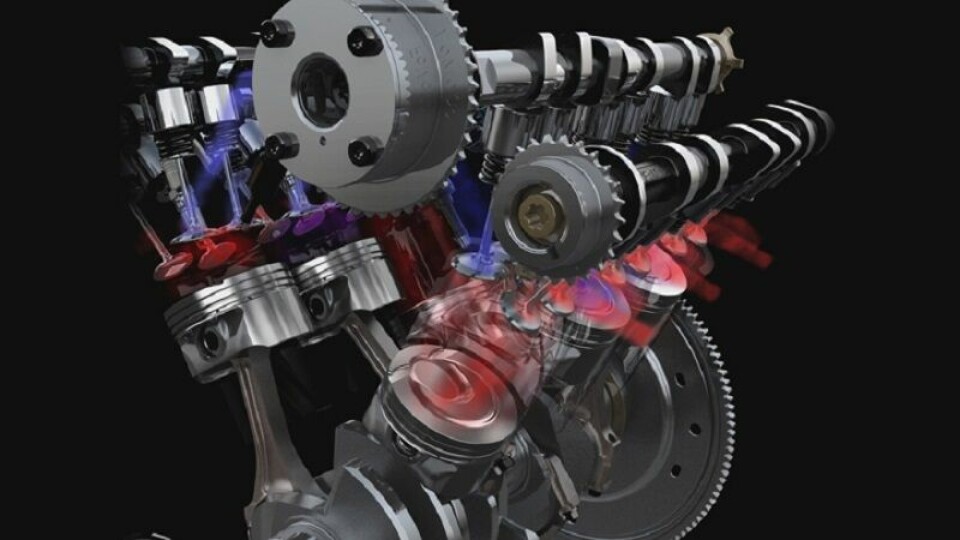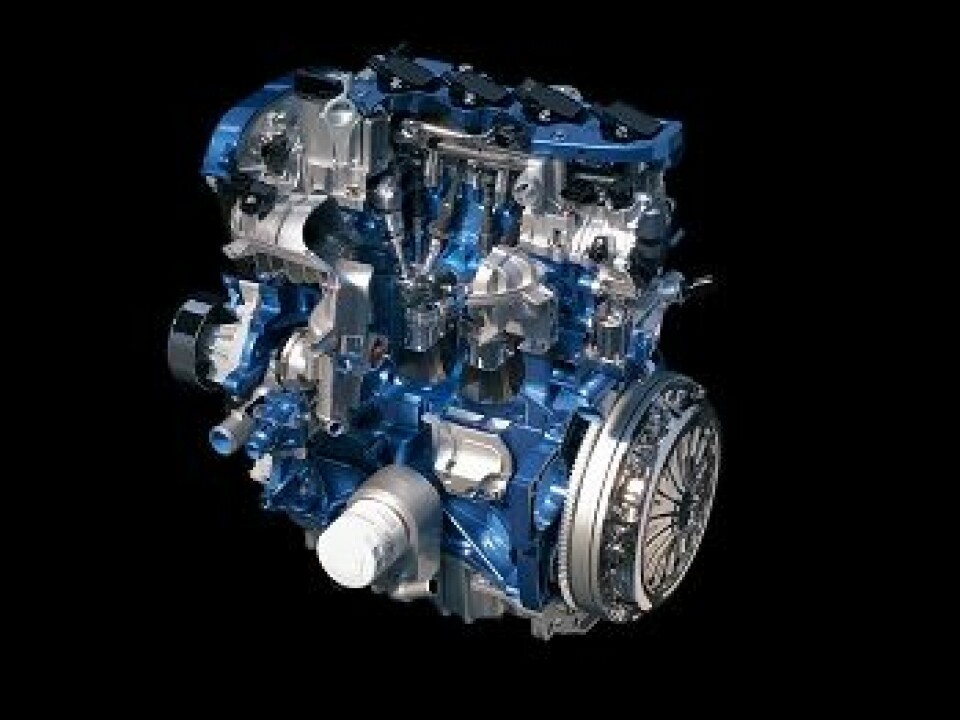Setting the standard
As Ford expands its powertrain production in China to meet rising local demand, Indy Singh, director of Powertrain, Ford AP manufacturing team, explains how the company is applying its global standards there

AMS: How has the One Ford programme been applied to powertrain manufacturing in China and is it now operating at a level comparable with Ford’s other high-volume production regions?
Indy Singh (IS): Ford China is completely integrated into Ford’s global strategy. Our overall manufacturing strategy is about having a common set of standards and specifications, a bill of process, that drives globally common facilities. This standard manufacturing strategy or footprint is operationalised through our operational umbrella, what we call the 'Global Ford Production System' (FPS). So from an engineering and operational standpoint, China is in complete alignment; how the plants look, operate, are structured, and the process and metrics used to track performance. These metrics are common to Ford’s global manufacturing network covering safety, quality, productivity, cost, people and also environmental impact and energy usage. This gives us a common language across multiple plants in all regions.
So this is how we have developed our manufacturing footprint in China. If you take, for example, producing crankshafts, we’ve applied our standard bill of process so the crank lines here operate exactly the same as those in North America, or India, etc.
AMS: Do you have your own casting operations for components such as crankshafts, or do you source them from outside suppliers?
IS: Globally, our manufacturing strategy for engine components is very consistent, with the majority of our plants focusing on a 'three-C' strategy (machining cylinder heads, cylinder blocks and crankshafts) and assembly and test. An exception to this might be an older, legacy plant that has some casting or forging operations, but the overall strategy is not to cast or forge in-house; we use a global supplier base for these operations, for example Nemak is a major global partner for our aluminium castings. This strategy is also applied to our transmission production; again we machine core components, including gears, which have a key impact on functional performance and durability.
Complete in-process quality control, in-line testing and traceability are the core of our zero-faults-forward assembly strategy. We have extensive localisation in China for the other components. These are sourced from our global suppliers with a footprint here and also local suppliers. This strategy helps us to maintain quality and control costs and provide value to our customers.
AMS: Which engines do you produce in China and will you add any new engines in the near future?
IS: In China, we are currently producing 15 vehicle product lines with the associated powertrains. Here, we produce our normally aspirated PFI engines, a family of the EcoBoost engines, including the 1.0-litre Fox GTDI. We also make the 2.0-litre GTDI Duratec engine for the newly launched Ford Edge and Mondeo models. Primarily our production in China with our Changan Ford JV is for gasoline engines, but we also make some diesel engines through our joint venture with JMC and these are Duratorq units for use in our Transit van applications.
Our aim is to bring new engine and transmission technologies and architectures to China in line with the introduction of new vehicle models. This will be driven by demand from the Chinese market and increasingly competitive fuel economy and strict vehicle emission regulations aligned with our global environmental sustainability strategy.

AMS: Does your 'three-C' production strategy allow you to produce new powertrain architectures here without the need for major changes to production lines and equipment?
IS: Flexibility is one of the core building blocks of our production strategy, so when a new powertrain product comes online we can make rapid changeovers to fixtures, tooling, etc. This is especially true of the machining operations as the CNC machining centres allow a lot of flexibility. The production lines have been designed to allow for additional workstations or machining content to be added. We have designed our operations to be as future-proofed as possible and we have done a lot of work with our partners in China to ensure this rapid reconfigurability for the future at efficient levels of investment and execution timing.
AMS: Is Ford pursuing a 'build-where-you-sell' strategy? How much of the powertrain output is for export?
IS: We are currently building around 1.4m vehicles per year in China, so importing powertrains isn’t really an option. We are pursuing a ‘build-where-you-sell’ strategy and our powertrain production facility footprint in China is continuing to grow in support of this increased vehicle demand. In recent years, we have increased our engine production capacity in Chongqing, China to 1.1m, with the addition of an all-new plant that has a capacity of 800,000.
In addition, we have launched an all-new, state-of-the-art automatic transmission facility with the capacity of 500,000 units per year. This is the first Ford automatic transmission manufacturing facility plant outside of the western hemisphere to build an all-new, six-speed transmission. The further expansion of our powertrain production capability in China remains on track, and along with our Chinese suppliers we will continue to increase the localised content in the engines and transmissions we build here.
In terms of producing for export, we are continuing to grow our capacity to support demand here in China so we don’t currently export powertrains produced here.
AMS: In recent years, you have significantly increased engine production capacity at Chongqing. Can you explain the manufacturing structure in terms of production lines, engine types and flexibility?
IS: In the last two years, we have launched the first phase at our engine plant and we have just launched phase two. Each of these phases is a self-contained unit working towards a production capacity of 400,000 units per year. Within this facility, we have the capability to produce three different [powertrain] architectures at Chongqing, so we can build the 1.5-litre Sigma PFI, the 1.5-litre Sigma GTDI Ecoboost and the 1.0-litre Fox GTDI engines. These can be made in any order, in batch size, on one of the assembly lines.
"The biggest challenge is also perhaps the biggest opportunity. The speed and scale of growth here needs to be matched by enhancing the capabilities of the workforce" – Indy Singh, Ford
The aluminium cylinder-block machining lines for Sigma are shared – the Fox has a cast-iron cylinder block – and the [cylinder-]head machining lines are shared by all three architectures, plus there are a number of variants under these architectures that these flexible machining modules can accommodate. The crank[shaft] lines are also shared across all three engine types. Another notable feature of the machining modules is the extensive use of our minimum quantity lube (MQL) strategy, resulting in reduced hydrocarbon usage, improved plant environments and lower energy and waste treatment requirements. The machining and assembly modules have prudent use of automation for quality, consistency and productivity.
All machining lines utilise a process-control and traceability strategy for each component to ensure quality and visibility throughout the [production] process. On our assembly systems, we have deployed in-station process control and instituted a zero-faults-forward mindset, so no off-standard repairs… If a defect is detected, the engine is stripped down to a prior, verified level of build and reintroduced into the line. At the same time, if an operator identifies a problem he can stop the line and take appropriate action.
The plant layout and material flow is also streamlined, with extensive use of kitted part feeding to the point of use and fit.
AMS: What production challenges does China present?
IS: When we began manufacturing here, we already had the ‘building blocks’ of a set of manufacturing standards and a bill of process, so we didn’t need to 'reinvent the wheel'. We began with proven existing engine architectures, localising production of the Sigma engine and we benefited from having the stability of this design.

The biggest challenge is also perhaps the biggest opportunity. The speed and scale of growth here needs to be matched by enhancing the capabilities of the workforce. So, for example, we monitor how any equipment breakdowns are addressed and rectified and work continuously to improve the speed and effectiveness of the response, comparing similar metrics from the US and Europe. We are very fortunate to have a motivated workforce that wants to learn and improve, and is committed to the Ford Production System. The basic competences are established, but it is in the experience [of the workforce] which must be gained that will see improved performance. This is the current journey we are on in China.
AMS: Do you operate a continuous improvement programme with the workforce here?
IS: The foundation of our manufacturing operation is standardised work practices and operating systems, and we are always looking at these standards to see if improvements can be made. However, we are looking for a consistent evolution and a structured continuous improvement programme at the heart of this. At each level of the operation, the workforce is encouraged to come up with solutions to improve efficiency.
Any suggestions are subjected to a very structured governance process where feedback is taken to a regional forum for discussion and deliberation, then if the proposed action is validated and approved it is flowed into the global forum for adoption. As such, we avoid having pockets of excellence by introducing improvements to the standard process to the global network. We are also working to empower the workforce to take the initiative, to take ownership of the job.


